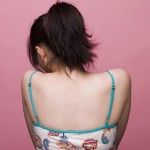Maiden, All Too Maiden! 娇羞的,太娇羞的!



Maiden, All Too Maiden!
2009, Photographic installation, 120 photographs, each 80 x 80 cm
Coyness is a form of expression, which in the common usage, is implicit of a form of feminine social gender characteristic. Social gender characteristics and biological gender attributes, though often ambiguous, seem to complement each other. However, when taken apart and seen on its own, the rhetorical nature of coyness becomes evident. Take for example, in the field of film and television, the display of coyness is an important tool in the presentation of a female role by a male actor. Audiences delight at such performances, marvelling at its likeness (the performance of Leslie Chung as Chen Dieyi and Yu Ji in Farewell My Concubine) and gaining satisfaction in have recognised the traits; or feel a sense of intellectual superiority having seeing through the structure of a performance (as in the drag performances of Xiao Shenyang).
In short, coyness implies femininity. In androcratic language usage, it produces a subservient female identity, for coyness remains an attribution of a certain subject, where the subject has itself been objectified. The coyness of a woman, conscious or otherwise, is in fact judged by the male gaze. In this aspect, coyness is the mechanism for the creation of the female Other.
The antonym of ‘coy’, ‘flirtatious’ or ‘coquettish’ however, does not necessarily imply the liberation of the female subject. Instead, they are merely another form of female identity construct. In fact, it constitutes, on two levels, male imaginations and restraints toward the female subject, a dual exploitation of the female gender, both sociologically and biologically. Thus, in this era, the liberation of the female is only an illusion. Even when the female sheds her coyness, it only results in the male construction of another female gender identity.
In Maiden, All Too Maiden!, Jiang Zhi captures the expressions of coyness of 100 models. At first glance, the photographs look no different from usual glamour shots. However, by deliberately retaining certain details of the faces (such as acne, freckles and mascara clogs), Jiang’s photographs differ from those commonly seen in magazines. It is an attempt to capture a kind of ‘performativity’, in order to amplify the rhetorical nature of coyness. As a result, makeup and expressions (social gender construct) are separated from the face (biological gender construct), and are reduced to a pure rhetorical form devoid of signification.
Here, the distinction between sociological and biological gender is only a conceptual tool. In reality, the two are mutually dependent. Can one really cast aside identity and physical signification, and ‘sincerely’ or ‘fundamentally’ discuss gender issues? Is there such a thing as real, natural coyness? Whether the models’ coyness is performed or not is no longer important. The main point is that gender identity is itself a performance. As Judith Butler noted, ‘a sexualised body is like an actor performing a play without a script. The actor is striving to imitate a life he/she has never experienced.’ To add to this, the actor himself knows not that he is in a play.
Gender will always be an identity construct, constantly in flux. Words like ‘female’ or ‘male’ are just like ‘human nature’. Jiang reiterated this point with a title inspired by Nietzsche’s Human, all too human!.
























